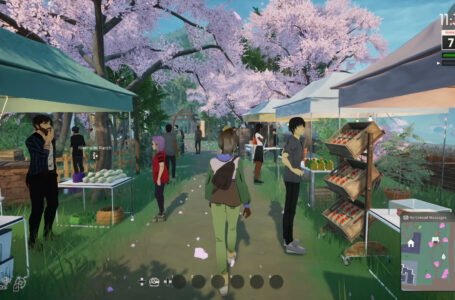Real life Root Film: Tsuwano
Kadokawa Games’ Root Film, like its spiritual precursor Root Letter, is set in and around Shimane Prefecture in Japan. This is an area full of beautiful scenery, rich cultural traditions and strong connections with Japanese mythology.
In the second part of protagonist Yagumo’s story, you visit the town of Tsuwano as Yagumo and his friends scout out potential locations for the TV drama they will soon be shooting. So let’s take a look at some of the real-life sights of the area that you’ll see in the game!
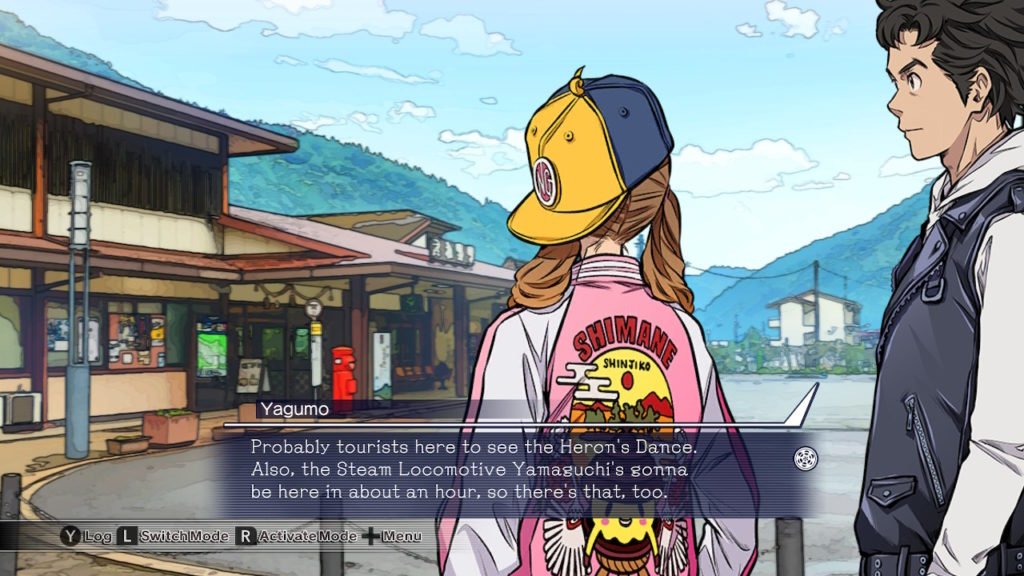
Tsuwano is a small town in the southwest corner of Shimane Prefecture. It’s fairly remote in location and surrounded by hills, and is often described as the “little Kyoto of San-In,” a reference which a character makes in Root Film.
It’s about 200km from Shimane’s capital Matsue, and takes three to four hours to reach by road from the capital — if you go by public transport it can take as long as four or five hours. Positioned as it is in the southwest corner of Shimane Prefecture, it is often mistaken as being part of Yamaguchi Prefecture, and tourists visiting Yamaguchi often stop by Tsuwano as part of their travels.
In Root Film, Yagumo and company arrive in Tsuwano just in time to witness the Heron Dance or Sagimai, a traditional dance that originated in Kyoto but which has been maintained in its most authentic form in Tsuwano. In many other regions — including Kyoto — the dance died out, and so Tsuwano became the main place where the knowledge and traditions of this dance persisted.
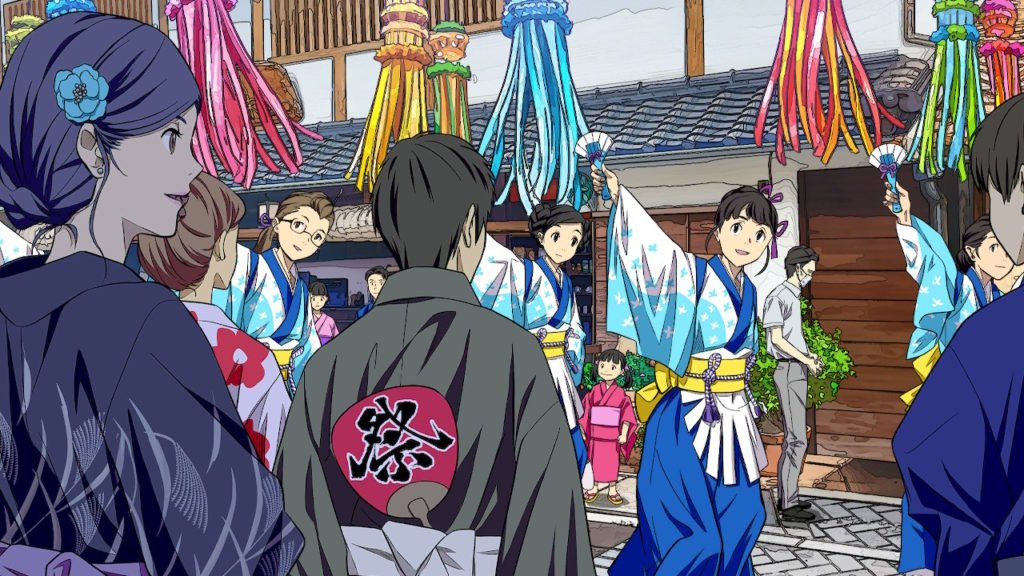
In reality, the Heron Dance represents a mating ritual between a male and a female heron and acts as a metaphor for the passion between separated lovers; two main dancers represent the herons, while other dancers twirl batons and play drums and bells around them. Traditionally, all the participants in the mating dance are male — perhaps due to the fact that the heron costumes, made of paulownia wood, weigh upwards of 15 kilograms each.
The Heron Dance is typically performed as part of the Hoshiai Festival in Tsuwano, a take on the traditional Tanabata festivals held throughout Japan. In Root Film, we see the festival procession proceed from its starting point at Yasaka Shrine, past the Yoshinaga Rice Shop and onwards into the streets of the town.
Yoshinaga Rice Shop is a real place that is particularly famous for its ponds that are filled with koi carp — indeed, many visitors to the shop go to feed the carp rather than to buy the products from the store, and the store’s owners are more than happy to cater to these people. According to TripAdvisor, you can pay the equivalent of about a dollar to get a bag of crackers with which to feed the koi.
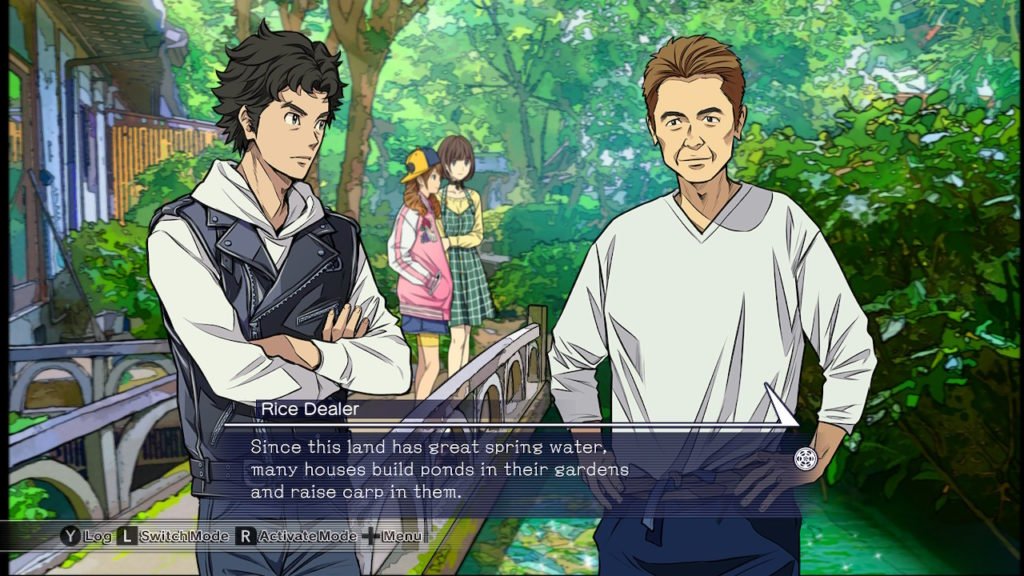
It is popular to keep koi carp in Tsuwano for a few reasons: firstly, the quality of the water from local springs is very good, and secondly, there’s a traditional, practical reason. In the Edo period (late 16th century to early 17th century), a local lord named Naomori Sakazaki introduced the region’s iconic network of aqueducts, and koi carp were supposedly introduced to these in order to counter mosquito infestations.
Today, the mosquitoes are perhaps less of an issue than they were several centuries ago, but many Tsuwano residents still keep koi carp in their gardens simply as a pastime, or part of their overall landscaping efforts.
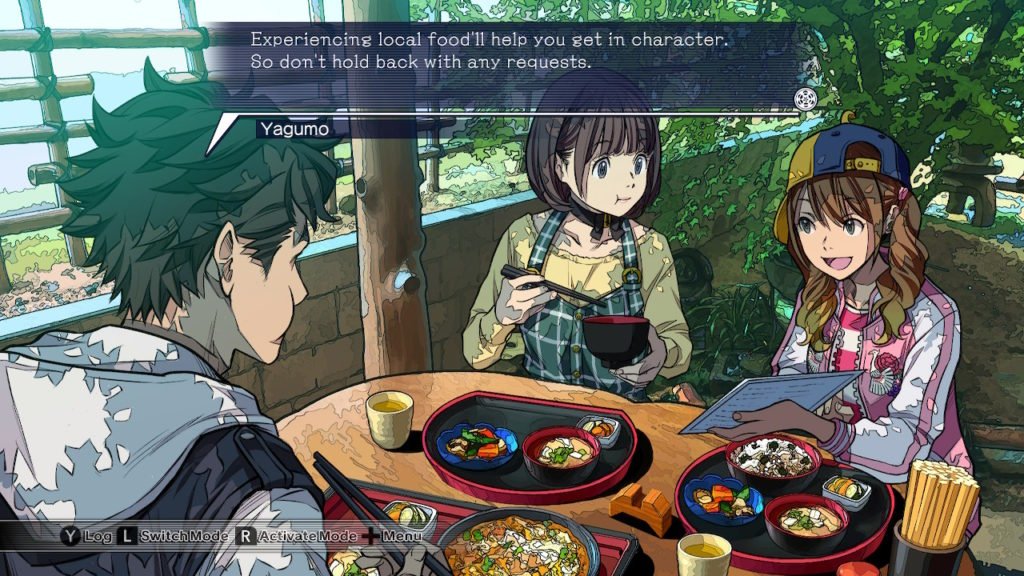
Tourism can be hungry work, so naturally you’ll want to stop and eat at some point. And a popular place to do so that is also featured in Root Film is Minoya, a café near the station that specialises in Japanese-style sweets, but which also sells set meals, cakes, lunches and noodles. As a popular tourist destination, Minoya even has an English menu so those of us who haven’t brushed up on our kanji lately can know what’s worth ordering.
Tsuwano is particularly known for its chestnuts, so it’s no surprise to see Yagumo’s assistant Magari and actress Amakata following up their set meal lunch at Minoya with a chestnut-based dessert… and some other things besides, much to the dismay of Yagumo’s wallet.
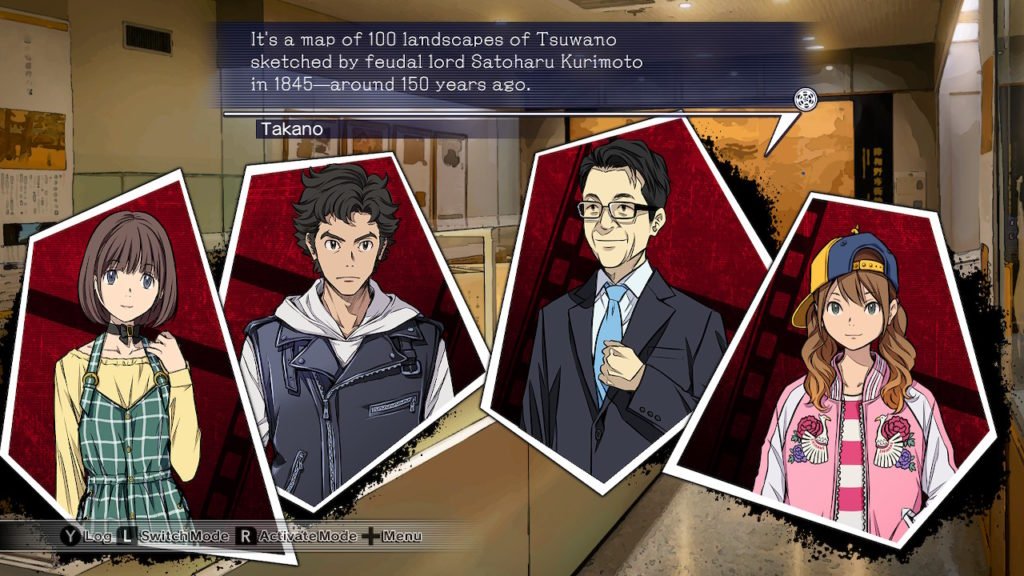
Finally, one of the most interesting parts of Tsuwano from a historical and tourism perspective is the existence of the “Hundred Views Map” — a series of a hundred sketches of the region, recorded in 1845 by local lord Satonaru Kurimoto. The images were intended to document the sights and customs of the region at the time they were drawn, and many tourists to Tsuwano use them as something of a tour guide, comparing Kurimoto’s hundred views with their modern equivalents.
The best starting place to find out about the Hundred Views Map and Tsuwano’s history in general is the local Japanese Heritage Centre, which, of course, also appears in Root Film. The Centre offers guidebooks and videos to take you through the places depicted in the Hundred Views Map, and highlights the fact that Tsuwano, on the whole, has seemingly made a distinct effort to try and keep things as traditional and “authentic” as possible — something to be celebrated in this day and age, for sure!
You can find out more about Tsuwano on the official website. And Root Film is out on Friday — be sure to preorder a limited edition from our store if you haven’t already!
Join The Discussion
Rice Digital Discord
Rice Digital Twitter
Rice Digital Facebook
Or write us a letter for the Rice Digital Friday Letters Page by clicking here!
Disclosure: Some links in this article may be affiliate links, which means we may earn a small commission if you make a purchase after clicking on them. This is at no additional cost to you and helps support Rice Digital!
- Letter from the Editor: passing the torch - June 30, 2023
- Super Woden GP 2 is looking promising - June 30, 2023
- Inti Creates is making a 32 bit-style Love Live action platformer - June 26, 2023





